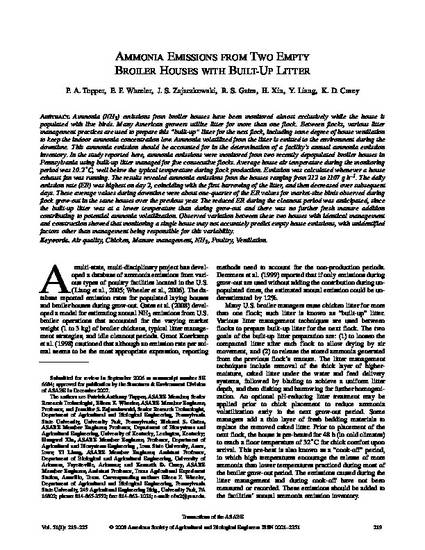
Ammonia (NH3) emissions from broiler houses have been monitored almost exclusively while the house is populated with live birds. Many American growers utilize litter for more than one flock. Between flocks, various litter management practices are used to prepare this "built-up" litter for the next flock, including some degree of house ventilation to keep the indoor ammonia concentration low. Ammonia volatilized from the litter is emitted to the environment during the downtime. This ammonia emission should be accounted for in the determination of a facility's annual ammonia emission inventory. In the study reported here, ammonia emissions were monitored from two recently depopulated broiler houses in Pennsylvania using built-up litter managed for five consecutive flocks. Average house air temperature during the monitoring period was 10.2°C, well below the typical temperature during flock production. Emission was calculated whenever a house exhaust fan was running. The results revealed ammonia emissions from the houses ranging from 212 to 1107 g h-1. The daily emission rate (ER) was highest on day 2, coinciding with the first harrowing of the litter, and then decreased over subsequent days. These average values during downtime were about one-quarter of the ER values for market-size birds observed during flock grow-out in the same houses over the previous year. The reduced ER during the cleanout period was anticipated, since the built-up litter was at a lower temperature than during grow-out and there was no further fresh manure addition contributing to potential ammonia volatilization. Observed variation between these two houses with identical management and construction showed that monitoring a single house may not accurately predict empty house emissions, with unidentified factors other than management being responsible for this variability.
Available at: http://works.bepress.com/richard-gates/25/

This article is from Transactions of the ASABE 51, no. 1 (2008): 219–225.